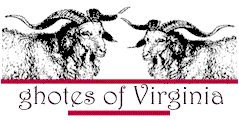
"Chincoteague is an island seven miles long, and three miles wide at its extremity and is the largest island of Accomac County. Chincoteague is situated on the Eastern Shore of Virginia, about four miles from the mainland. It is surrounded by Chincoteague Bay, Chincoteague Inlet and Assateague Channel."
"We know very little of Chincoteague's early history, but we do know the first settlers were Indians, but nothing is known of them. Some believed that the name of the tribe ended in "eague", and that it was under the Chief Powhatan."
"The colony was first granted a charter in 1672, but owing to a dispute over the right title, the island was not given a clear title until 1692. At this time Lieutenant Nicholson, then Governor of Virginia, obtained the grant of land from William of Orange, King of England. This grant held good. A few years later a colony of Quakers secured 500 acres, but religious quarrels broke out with the original settlers who were members of the Episcopal Church, so the Quakers were forced to leave."
"The first census taken in 1831 showed 510 inhabitants. Thirty years later the population has increased to 1,100 and today the census shows the population to be 4,500."
"One of the leading industries of Chincoteague is the planting and shipping of oysters. Oysters were first planted in 1864 and so great has this industry grown, that Chincoteague is today, one of the largest shippers of oysters on the Eastern Shore. Oysters taken from Chincoteague Bay bring millions of dollars into Chincoteague each year."
"Another important industry is the planting and shipping of clams. Chincoteague ships more clams to outside markets than any town of its size in the state."
"A third industry is fishing. Among the chief fish caught here are: trout, croakers, spot and channel bass which weigh as much as sixty-five pounds each. These are packed and shipped in barrels to northern and western markets."
"In these three industries lies Chincoteague's wealth, and the hope for greater prosperity in the future."
"There have been many improvements made in our town during the past twenty years. Among these are the new Methodist Church, which is considered one of the finest on the Eastern Shore. Other improvements are, a brick High School, a toll bridge and shell road, which connects Chincoteague with the main land, two new banks, a new theatre, and a new up-to-date fire engine."
"From her earliest history Chincoteague's only means of transportation was by boat, but one of our citizens conceived the idea of a bridge, which would connect Chincoteague with the mainland."
"The bridge was erected, and since 1923, Chincoteague, although still an Island, has been able to enjoy easy access not only to her own state but to other states."
"The building of the bridge practically overcame the disadvantages of isolation formerly experienced by the inhabitants. One is no longer wholly dependent on boats as his only means of transportation, but may leave the Island in a automoble or vehicle of travel at any time."
"The town has a "bus line" which provides splendid motor transportation to railroad stations."
Copyright © 1996 Most recent revision February 10, 2004